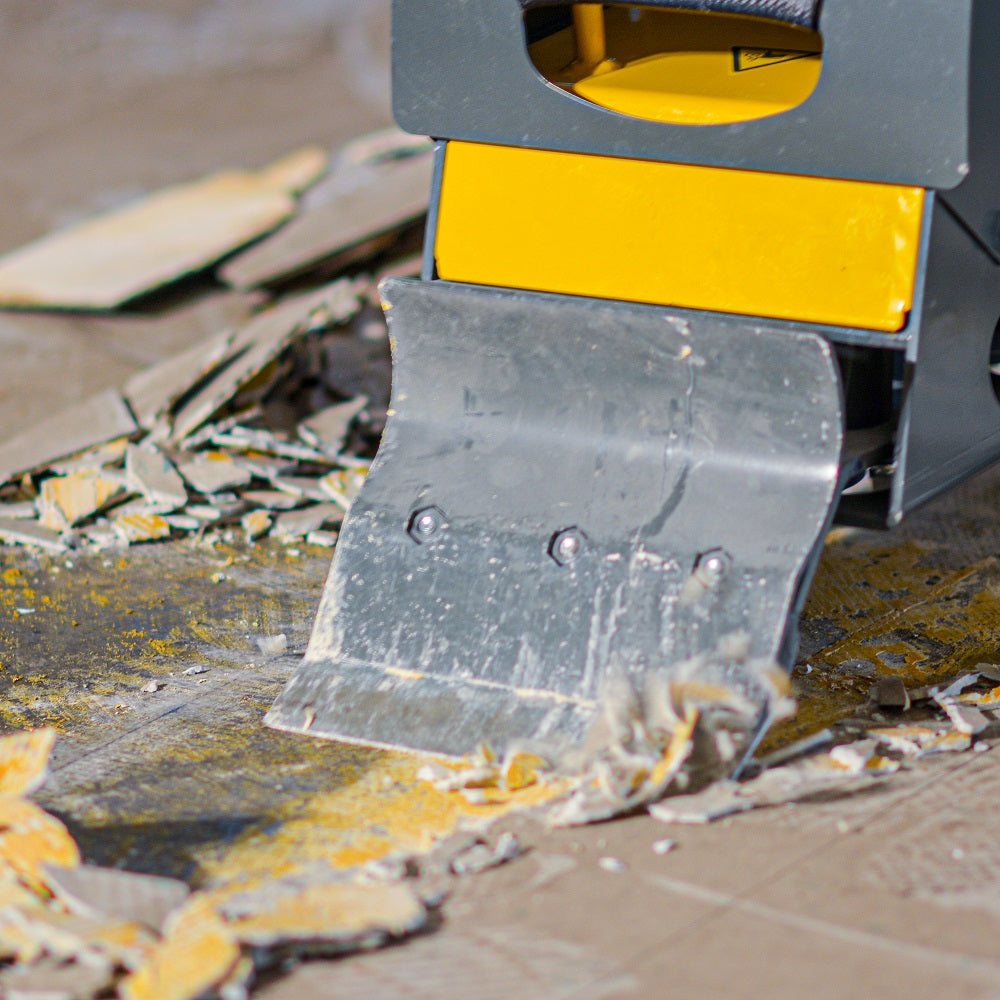Floor removal is a common task in construction and renovation projects, whether you're replacing old flooring materials or preparing a surface for a new installation. Scrapers are essential tools for efficiently removing various types of flooring, such as tiles, carpet, linoleum, and vinyl. In this guide, we'll explore techniques to ensure efficient and effective floor removal using scrapers.
1. Prepare the Work Area
Before you start using scrapers for floor removal, it's essential to prepare the work area properly:
-
Clear the Space: Remove furniture, obstacles, and debris from the area to create a clear workspace.
-
Protect Adjacent Areas: If you're working in a room with adjacent areas that don't require floor removal, consider using drop cloths or plastic sheeting to protect those areas from dust and debris.
2. Select the Right Scraper
Choosing the appropriate scraper for the type of flooring you're removing is crucial for efficient removal:
-
Handheld Scrapers: These are versatile tools for smaller areas or when precision is required.
-
Floor Scrapers: Floor scrapers are designed for larger areas and heavy-duty work. They come with longer handles for increased leverage and efficiency.
3. Use Proper Technique
Using the right technique is key to efficient floor removal with scrapers:
-
Start at an Edge: Begin at a corner or an edge of the room. Use the scraper to lift the edge of the flooring material.
-
Work in Sections: Divide the floor into manageable sections to avoid overwhelming yourself and ensure thorough removal.
-
Angle of Attack: Hold the scraper at a slight angle to the floor. This helps get under the flooring material and lift it more easily.
-
Apply Pressure: Apply downward pressure on the scraper while pushing it forward. This pressure helps the blade penetrate and separate the flooring material from the subfloor.
-
Use Two Hands: For better control and efficiency, use both hands to operate the scraper, especially when using larger floor scrapers.
4. Address Difficult Areas
Certain areas may be more challenging to remove flooring from. Here's how to tackle them efficiently:
-
Edges and Corners: Use a smaller handheld scraper to carefully work around edges, corners, and tight spaces.
-
Adhesive Residue: If there's adhesive residue left behind after removing the flooring material, you may need to use adhesive removers or heat guns to soften it before scraping.
-
Tile Removal: When removing tiles, start by breaking one tile with a hammer or a tile chisel. Once you create an opening, you can use the scraper to lift and remove the remaining tiles.
5. Stay Safe
Safety is paramount during floor removal:
-
Protective Gear: Wear safety goggles, gloves, and a dust mask to protect yourself from debris and dust.
-
Knee Pads: If you're spending a lot of time on your knees while scraping, consider wearing knee pads to prevent discomfort.
-
Proper Footwear: Wear sturdy, closed-toe shoes with good grip to prevent slipping.
6. Dispose of Debris
Have a plan for disposing of the removed flooring material and debris:
-
Trash Bags: Keep heavy-duty trash bags nearby to collect the removed flooring material.
-
Debris Removal: If the amount of debris is substantial, arrange for proper disposal according to local regulations.
Efficient floor removal with scrapers requires a combination of proper preparation, technique, and the right tools. By following these techniques and safety precautions, you can ensure that your floor removal projects are completed efficiently and with minimal hassle. Remember to choose the appropriate scraper for the job, maintain good posture while working, and take breaks as needed to avoid strain. With the right approach, you'll achieve a clean and prepared surface for your next flooring installation or renovation.










